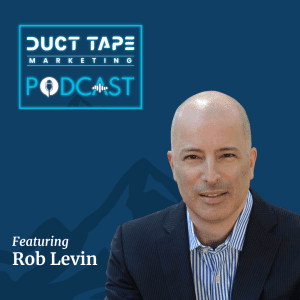How often do you listen to music? Tune into a podcast? For many of us, the answer to one or both of those questions might be “every day.” Auditory listening experiences are more powerful than I think people realize. They’re a meaningful part of our own lives, but they’re also an integral influence on culture as well. Different generations engage with audio differently, and for millennials and Gen Z, audio has become a component of self-care in their own lives and a way to drive cultural inclusivity and interconnectivity within society. The unique perspectives these younger generations carry in conjunction with their shared interests are reshaping the audio landscape in pretty amazing ways. If companies aren’t reflecting this shift in their marketing efforts, they’ll quickly become invisible to these consumers.
Millennials and Gen Z aren’t just interested in listening to music and podcasts, they want to discover, create, build communities and, most importantly, make sure the microphone is being passed around to diverse voices. How can brands learn from these listeners? Engage with them? Create with them?
1. Mood-match your listeners. Audio doesn’t just provide an element of entertainment to a person’s listening experience; it can be tapped as a form of self-care. We found that 83 percent of millennials and 69 percent of Gen Zs use their Spotify accounts to carefully curate playlists and choose podcasts that help reduce stress. They seek specific auditory listening experiences that help them self-regulate, manifest, and heal their anxiety. This is why we’ve seen an increase in listeners for podcast categories such as mental health, alternative health, spirituality and self-help over the last two years. As millennials and Gen Z incorporate audio into their self-care routines, brands have an opportunity to entwine themselves within these practices.
2. Keep the same flow. Listeners thoughtfully select the music and podcasts they listen to on a particular day to coincide with their mood. Think about this as you decide where you’d like to advertise a product or service. Listeners are more receptive to ads that not only match the mood of what they’re listening to, but they’re also more likely to buy something that’s aligned with their interests.
3. Curate comforting content. We know repetition often leads to positive associations in music, and the same is true for ads as well. The more we listen to something that interests us, the more it resonates. Get yourself in front of these listeners with comforting content that promotes a positive listening experience. Connecting with listeners in deeply engaging moments drives better outcomes.
4. Get educational. Podcasts are growing in popularity as listeners strive to expand their knowledge and awareness of a range of topics. If you want to advertise on podcast platforms, consider creating ads that deliver short, insightful facts that peak a listener’s curiosity, which will make them more curious about your brand.
5. Invite listeners into your creative process. The dynamic between brands and their audiences is changing. Social media platforms are bringing people together and bridging the gap between creators and consumers, making both sides more equal participants in the marketing experience. This newfound sense of community and connection inspires collaboration and invokes stronger relationships between companies and consumers. Brands must open themselves up and let their customers into their creative process.
6. Maintain relevance in real time. Are you paying attention to trends in real time? It’s difficult for brands to transform an idea into an advertisement in a short timeline, so we created a tool called Spotify Ad Studio, which acts as a sort of self-serve ad station where brands can put out an advertisement in a matter of minutes. This gives them the ability to engage with listeners in real time as certain trends spike in popularity, helping them get a leg up over the competition.
7. Get creative to spur collaboration. It’s time companies pull back the curtain and let consumers take a peek inside. Ask your customers for feedback and allow them to guide the type of experience they have with your brand. In 2020, for example, Calvin Klein launched their ‘one future #ckone’ campaign that invited Gen Zs to engage with the question: “What do you hope for?” After they answered the question, they could add a song to the company’s curated playlist and listen to the other songs people chose based on their answers.
8. Advocate for diversity and inclusion. Millennials and Gen Z are fervent about a lot of things, and diversity and inclusion are at the top of that list. They won’t even work for companies who don’t prove their commitment to diversity in the workplace, and that same mentality extends to what companies they support and even what audio they listen to. They’re excited to see new, underrepresented voices in music and podcasts and this is having an impact on the entire industry. They expect brands to share these same views and show diversity and inclusion through their campaigns, partnerships, and philanthropic movements. Brands can prove this commitment in how they advertise.
9. Sponsor new sounds. Companies can reach millennials and Gen Z through a number of ways, like sponsoring music by new artists, creating/sponsoring diverse playlists, and choosing to advertise on podcast platforms that promote better representation. Cinnamon Toast Crunch, for example, recently partnered with an emerging Latinx artist, Cuco, to create custom audio and video highlights that share his story while promoting their brand. This doesn’t only financially support these new voices, but this is also where you’ll find most of your target audience.
Advertising on music streaming services and podcasts is how you’ll expand your outreach, especially to younger generations, but to be successful, companies must be thoughtful and intentional about their ads, and their goals.
























































![Key Metrics for Social Media Marketing [Infographic] Key Metrics for Social Media Marketing [Infographic]](https://www.socialmediatoday.com/imgproxy/nP1lliSbrTbUmhFV6RdAz9qJZFvsstq3IG6orLUMMls/g:ce/rs:fit:770:435/bG9jYWw6Ly8vZGl2ZWltYWdlL3NvY2lhbF9tZWRpYV9yb2lfaW5vZ3JhcGhpYzIucG5n.webp)

















